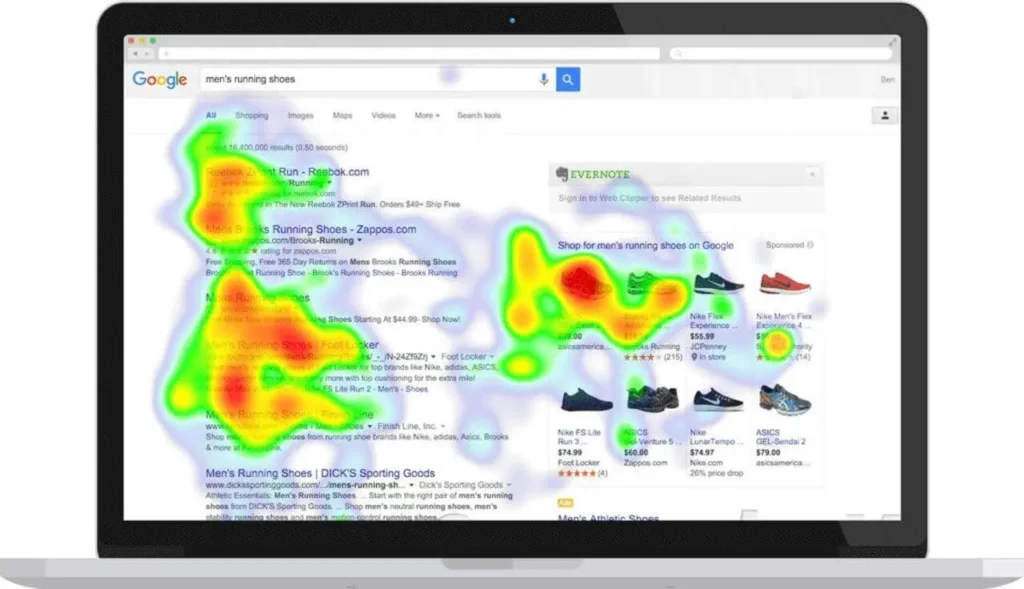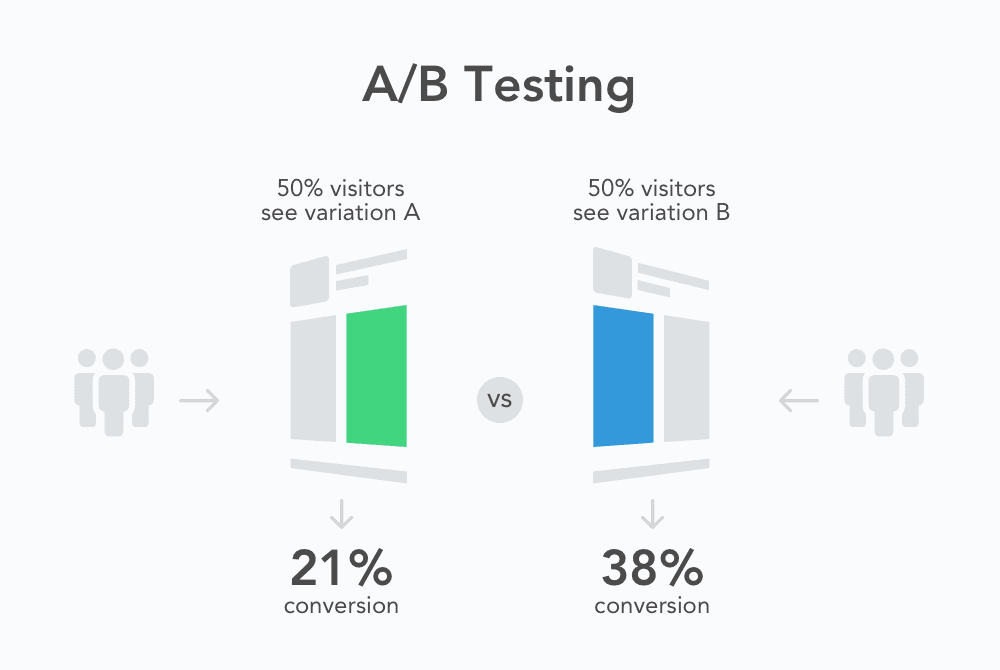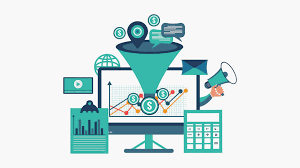In today’s competitive digital landscape, understanding your customers’ journey has become more crucial than ever. As we approach 2025, businesses are increasingly turning to customer journey mapping as a powerful tool to gain valuable insights into their audience’s behaviors, preferences, and pain points. By visually mapping out each step a customer takes—from initial awareness to final purchase and beyond—you can identify opportunities to enhance user experience and strategically optimize your conversion rates. In this comprehensive guide, we’ll explore the latest trends, best practices, and actionable strategies in customer journey mapping that will help you boost your conversion rate optimization efforts and achieve maximum impact for your business in 2025 and beyond.
1. Introduction to Customer Journey Mapping in 2025
In today’s rapidly evolving digital landscape, understanding your customers’ journey has never been more critical. Customer Journey Mapping in 2025 goes beyond simply tracking touchpoints—it’s about creating an immersive, data-driven blueprint that reveals how customers interact with your brand across multiple channels and devices. With advancements in AI, machine learning, and real-time analytics, businesses can now gain deeper insights into customer behaviors, preferences, and pain points than ever before. This comprehensive understanding allows marketers and CX professionals to tailor experiences that not only meet but exceed expectations, ultimately driving higher engagement and boosting conversion rates. In this guide, we’ll explore the latest tools, techniques, and best practices for effective customer journey mapping in 2025, empowering you to optimize every stage of the customer lifecycle for maximum impact.
2. Why Customer Journey Mapping is Essential for CRO
Customer Journey Mapping is a critical tool for Conversion Rate Optimization (CRO) because it provides a detailed visualization of your customers’ experiences from their very first interaction with your brand to the final purchase—and beyond. Understanding this journey allows you to identify key touchpoints where customers may hesitate, drop off, or feel disengaged. By pinpointing these moments, you can strategically optimize your website, marketing messages, and overall user experience to guide customers smoothly toward conversion.
Without a clear map of the customer journey, businesses often operate in the dark, making assumptions about what drives customer behavior. This can lead to wasted resources on strategies that don’t resonate or address real pain points. Customer Journey Mapping, on the other hand, reveals the emotional highs and lows, motivations, and barriers customers face, enabling you to craft targeted interventions that increase satisfaction and encourage action.
Moreover, journey mapping fosters alignment across teams—marketing, sales, customer service, and product development—by providing a shared understanding of customer needs and expectations. This holistic approach ensures that every touchpoint is optimized for maximum impact, ultimately boosting your conversion rates and driving sustainable business growth. In the evolving landscape of 2025, where customer experience is paramount, customer journey mapping is no longer optional—it’s essential for delivering personalized, seamless experiences that convert.
3. Key Trends Shaping Customer Behavior in 2025
As we move further into 2025, understanding the evolving landscape of customer behavior is crucial for effective customer journey mapping and boosting your conversion rates. Several key trends are shaping how customers interact with brands, make purchasing decisions, and engage throughout their journey.
1. Hyper-Personalization Powered by AI:
Customers today expect experiences tailored specifically to their preferences and needs. Advances in artificial intelligence and machine learning enable businesses to analyze vast amounts of data and deliver hyper-personalized content, product recommendations, and communication. This level of personalization increases engagement and significantly improves conversion rates.
2. Omnichannel Seamlessness:
Consumers are interacting with brands across multiple channels—from social media and mobile apps to in-store visits and customer service calls. The expectation is a seamless experience regardless of the platform. Brands that integrate their channels cohesively allow customers to transition effortlessly through the journey, reducing friction and abandonment.
3. Increased Demand for Transparency and Ethical Practices:
Modern customers are more conscientious, valuing brands that demonstrate transparency, sustainability, and ethical business practices. This trend influences purchasing decisions, driving customers towards companies that align with their values. Incorporating these elements into your journey mapping ensures you connect with customers on a deeper, more authentic level.
4. Voice and Visual Search Adoption:
With the rise of smart speakers and visual search technologies, customers are shifting how they discover products. Optimizing for voice and image-based searches helps capture this growing segment and enhances the journey by making discovery faster and more intuitive.
5. Real-Time Engagement and Instant Gratification:
The demand for quick responses and instant gratification is higher than ever. Customers expect real-time support through chatbots, live chats, or instant notifications. Incorporating these touchpoints into your journey mapping can reduce wait times and keep customers engaged throughout their path.
By understanding and integrating these key trends into your customer journey mapping, you’ll be better equipped to optimize each touchpoint, anticipate customer needs, and ultimately boost your conversion rates for maximum impact in 2025.
4. Defining Your Customer Personas for Accurate Mapping
Defining your customer personas is a crucial step in creating an effective customer journey map. These personas are detailed, semi-fictional representations of your ideal customers based on real data and market research. By understanding who your customers are—their demographics, behaviors, motivations, and pain points—you can tailor each stage of the customer journey to meet their specific needs and expectations.
Start by gathering data from multiple sources such as website analytics, customer surveys, social media insights, and sales feedback. Look for patterns that reveal common traits and preferences among your audience. For example, you might identify a persona like “Budget-Conscious Brenda,” a young professional who values affordability and quick service, or “Tech-Savvy Tom,” an early adopter eager to explore new features.
Once you have your personas, integrate them into your journey mapping process to visualize how different types of customers interact with your brand at various touchpoints. This allows you to pinpoint moments of friction or delight unique to each persona, enabling you to optimize your messaging, offers, and user experience accordingly. Accurate personas ensure your customer journey map is not a generic overview but a strategic tool that drives targeted improvements, ultimately boosting your conversion rates and customer satisfaction.
5. Mapping Touchpoints: Identifying Every Customer Interaction
Mapping touchpoints is a critical step in understanding and optimizing the customer journey. Every interaction a customer has with your brand—whether it’s visiting your website, receiving an email, engaging with customer service, or seeing an ad—serves as a touchpoint that influences their overall experience and decision-making process. By identifying and cataloging these touchpoints, you gain a clear picture of where and how customers engage with your business.
Start by listing all the possible channels and moments where customers might interact with your brand. This includes online platforms like social media, your e-commerce site, and mobile apps, as well as offline interactions such as in-store visits, events, or phone calls. Don’t overlook micro-moments, like opening a promotional email or reading a product review, as these can have a significant impact on customer perceptions and actions.
Once you’ve mapped out these touchpoints, analyze the quality and effectiveness of each interaction. Are customers finding the information they need? Are there any pain points causing friction or drop-offs? This detailed insight allows you to tailor your marketing strategies, content, and support to enhance the customer experience at every stage.
Ultimately, thorough touchpoint mapping empowers you to create a seamless, cohesive journey that guides customers smoothly from awareness to purchase—and beyond—boosting your conversion rates and fostering long-term loyalty.
6. Tools and Technologies for Effective Journey Mapping
In today’s digital landscape, leveraging the right tools and technologies is crucial for creating an effective customer journey map that truly drives conversion rate optimization. With a wealth of options available, selecting the tools that align with your business goals and customer insights can make all the difference.
Analytics platforms like Google Analytics and Adobe Analytics provide invaluable data on user behavior, giving you a clear picture of how customers interact with your website or app at each stage of their journey. Heatmapping tools such as Hotjar and Crazy Egg offer visual insights into where users click, scroll, and spend the most time, helping you identify friction points and optimize user experience.
Customer feedback platforms like Qualtrics and SurveyMonkey enable you to gather direct input from your audience, uncovering motivations, pain points, and expectations that might otherwise go unnoticed. Meanwhile, CRM systems such as Salesforce and HubSpot help consolidate customer data across multiple touchpoints, ensuring your journey maps are informed by comprehensive, real-time information.
Additionally, journey mapping software like Smaply and UXPressia provides specialized features to visually design, share, and collaborate on detailed customer journey maps, facilitating alignment across teams and stakeholders.
By integrating these tools into your journey mapping process, you can gain a holistic understanding of your customers’ experiences, identify opportunities to enhance engagement, and ultimately boost your conversion rates with data-driven strategies tailored for maximum impact.
7. Integrating Data Analytics to Enhance Customer Insights
Integrating data analytics into your customer journey mapping process is a game-changer when it comes to gaining deeper customer insights and boosting your conversion rate optimization (CRO) efforts. By leveraging data from multiple touchpoints—such as website interactions, social media engagement, email campaigns, and purchase history—you gain a comprehensive view of how customers navigate through your sales funnel.
Advanced analytics tools allow you to track key metrics like bounce rates, click paths, and conversion points, helping you identify friction areas where customers drop off or lose interest. This granular level of insight empowers you to tailor your messaging, optimize user experiences, and personalize offers in ways that resonate more effectively with different segments of your audience.
Moreover, predictive analytics can forecast future customer behaviors based on historical data, enabling proactive adjustments to your marketing strategies before potential issues arise. By continuously monitoring and analyzing these data-driven insights, you ensure that your customer journey map evolves in real time, aligning perfectly with changing customer preferences and market trends.
Ultimately, integrating data analytics not only sharpens your understanding of the customer journey but also transforms your optimization efforts into precise, impactful actions that drive higher engagement, increased conversions, and sustained business growth.
8. Common Pitfalls to Avoid in Customer Journey Mapping
When embarking on customer journey mapping, it’s crucial to be aware of common pitfalls that can undermine your efforts and lead to inaccurate insights. One frequent mistake is relying solely on assumptions rather than real customer data. Without authentic feedback and behavioral analytics, your map might not truly reflect how customers interact with your brand, resulting in misguided strategies. Another pitfall is creating overly complex journey maps that are difficult to interpret or act upon. While it’s important to capture all touchpoints, too much detail can overwhelm your team and dilute focus from key conversion opportunities. Additionally, many businesses overlook the emotional aspect of the customer journey, focusing only on transactional steps. Emotions heavily influence decision-making, so neglecting this can prevent you from addressing critical pain points or moments of delight. Lastly, failing to update your customer journey map regularly can render it obsolete as market conditions and customer behaviors evolve. To maximize the impact of your conversion rate optimization efforts, stay vigilant of these pitfalls and approach journey mapping as a dynamic, data-driven process that continually adapts to your customers’ needs.
9. How to Align Journey Mapping with Conversion Rate Goals
Aligning your customer journey mapping with your conversion rate goals is essential for creating a seamless experience that not only attracts potential customers but also drives them toward taking meaningful actions. Start by clearly defining your conversion objectives—whether it’s making a purchase, signing up for a newsletter, or requesting a demo. Once these goals are established, map out each touchpoint your customers encounter, from initial awareness through to post-purchase engagement.
At every stage, analyze customer behaviors and pain points to identify moments where users might drop off or hesitate. Use data-driven insights to optimize these critical touchpoints—this could involve simplifying checkout processes, personalizing content, or offering timely incentives. By integrating conversion rate metrics directly into your journey mapping, you can prioritize improvements that have the highest impact on your business outcomes.
Remember, the goal is to create a fluid path that guides customers effortlessly toward conversion while enhancing their overall experience. Regularly revisit and update your journey map as you gather new data and customer feedback, ensuring your strategies remain aligned with evolving customer expectations and your conversion goals. This dynamic approach will empower your team to make informed decisions that maximize ROI and accelerate growth.
10. Personalization Strategies Based on Journey Insights
Personalization has become a cornerstone of effective customer journey mapping, enabling businesses to create tailored experiences that resonate deeply with their audience. By leveraging the insights gathered from mapping each touchpoint in your customers’ journey, you can identify key moments where personalized interactions will have the greatest impact on conversion rates.
Start by segmenting your audience based on their behaviors, preferences, and pain points uncovered during the journey analysis. For instance, if your data shows that a segment of customers frequently abandons their shopping carts at the payment stage, you can implement personalized follow-up emails offering assistance, discounts, or alternative payment options specifically targeted to that group.
Beyond emails, personalization can extend to website content, product recommendations, and even customer service interactions. Dynamic website elements that change based on a visitor’s past behavior or preferences make the experience more relevant and engaging. Similarly, chatbots and support teams equipped with customer journey insights can provide faster, more empathetic responses tailored to the individual’s current stage in the buying process.
Ultimately, by applying personalization strategies informed by your customer journey mapping, you not only enhance the customer experience but also drive higher conversion rates, foster loyalty, and maximize the overall impact of your marketing efforts. Remember, the more you align your messaging and offers with the unique needs of each customer segment, the more likely you are to create meaningful connections that convert.
11. Case Studies: Successful CRO Boosts Through Journey Mapping
Case studies provide invaluable insights into how customer journey mapping can significantly enhance Conversion Rate Optimization (CRO). By examining real-world examples, businesses can better understand the practical applications and tangible benefits of this strategic approach.
One notable case involves an online retail company that struggled with high cart abandonment rates. Through detailed customer journey mapping, they identified key friction points during the checkout process, such as complicated forms and unexpected shipping costs. By simplifying the checkout experience and clearly communicating shipping fees upfront, the company saw a 25% increase in completed purchases within just three months.
Another example comes from a SaaS provider that used journey mapping to personalize its onboarding experience. By tracking user behavior and pain points, they tailored their communication and support, resulting in a 30% boost in user activation rates and a significant reduction in churn.
These case studies underscore the power of journey mapping in uncovering hidden barriers and opportunities throughout the customer lifecycle. When executed thoughtfully, journey mapping not only improves user experience but also drives measurable improvements in conversion rates—turning browsers into loyal customers and maximizing the overall impact of your CRO efforts.
12. Measuring the Impact: Metrics to Track Journey Effectiveness
Measuring the impact of your customer journey mapping efforts is crucial to understanding how effectively your strategies are driving conversions and enhancing overall customer experience. Without tracking the right metrics, it becomes challenging to identify which touchpoints are performing well and which need improvement. Key metrics to focus on include conversion rates at each stage of the journey, customer satisfaction scores (CSAT), Net Promoter Score (NPS), bounce rates, and average time spent on site or within specific channels. Additionally, monitoring customer retention rates and repeat purchase frequency offers insight into long-term loyalty and engagement. By leveraging analytics tools and gathering both quantitative data and qualitative feedback, you can gain a comprehensive view of your journey’s effectiveness. Regularly analyzing these metrics enables you to make data-driven decisions, optimize touchpoints, and ultimately boost your conversion rate for maximum impact in 2025 and beyond.
13. Continuous Optimization: Iterating Your Customer Journey Map
Customer journey mapping is not a one-and-done task; it requires continuous optimization to truly maximize its impact on your conversion rates. As market trends evolve and customer behaviors shift, your initial map may become outdated or less effective. Regularly revisiting and iterating your customer journey map allows you to identify new pain points, discover emerging opportunities, and refine touchpoints to better meet your audience’s needs.
Start by gathering ongoing feedback through customer surveys, analytics, and direct user interactions. Analyze key performance indicators such as drop-off rates, conversion funnels, and engagement metrics to pinpoint where customers may be struggling or losing interest. Use these insights to make informed adjustments—whether that means simplifying a checkout process, personalizing messaging, or enhancing support channels.
Additionally, testing different scenarios and A/B experiments can reveal which changes resonate best with your customers. By fostering a culture of continuous improvement and agility, your customer journey map becomes a dynamic tool that drives sustained growth and elevates the overall customer experience.
Remember, the customer journey is a living ecosystem. Staying proactive in optimizing your map ensures you remain aligned with your customers’ evolving expectations, ultimately boosting your conversion rates and fostering long-term loyalty.
14. Collaborating Across Teams for a Unified Customer Experience
Creating a seamless and impactful customer journey requires more than just understanding your customers—it demands collaboration across all teams within your organization. When marketing, sales, customer support, product development, and data analytics work together cohesively, you ensure that every touchpoint reflects a consistent message and delivers value tailored to your customers’ needs.
Cross-departmental collaboration breaks down silos that often hinder effective communication and lead to fragmented experiences. For example, insights gathered by the customer support team about common pain points can inform product improvements, while marketing can craft targeted campaigns that resonate based on real customer feedback. Sales teams, armed with this unified knowledge, can personalize their approach, increasing the likelihood of conversion.
To foster this collaboration, establish regular interdepartmental meetings focused on customer journey insights, share unified data dashboards, and create shared goals centered on customer satisfaction and conversion optimization. By aligning your teams around a common vision and leveraging each department’s strengths, you build a cohesive customer experience that not only boosts conversion rates but also fosters long-term loyalty.
In essence, collaboration across teams transforms customer journey mapping from a static exercise into a dynamic, organization-wide strategy that drives maximum impact in 2025 and beyond.
15. Conclusion: Future-Proofing Your CRO with Customer Journey Mapping
As we look ahead to 2025 and beyond, future-proofing your Conversion Rate Optimization (CRO) strategy is more critical than ever. Customer journey mapping stands at the forefront of this effort, providing invaluable insights into how your customers interact with your brand at every touchpoint. By visually outlining each stage—from initial awareness to post-purchase engagement—you gain a comprehensive understanding of customer behaviors, pain points, and motivations. This clarity allows you to tailor your marketing efforts, personalize user experiences, and eliminate friction that may be hindering conversions.
Embracing customer journey mapping not only enhances your immediate CRO outcomes but also builds a resilient foundation for adapting to evolving consumer expectations and technological advancements. As data privacy regulations evolve and new channels emerge, having a dynamic, well-informed map of your customer’s journey ensures that your strategies remain agile and effective.
Ultimately, future-proofing your CRO means committing to continuous learning and iteration. Regularly updating your customer journey maps with fresh data and feedback allows you to stay ahead of trends and maintain a customer-centric approach. By integrating these insights into your optimization process, you’ll drive meaningful engagement, increase conversion rates, and secure long-term business growth in an ever-changing digital landscape.
In today’s rapidly evolving digital landscape, mastering customer journey mapping is more essential than ever for businesses aiming to boost conversion rates and drive meaningful growth. This 2025 guide has equipped you with the latest strategies and actionable insights to understand your customers’ behaviors, pain points, and motivations at every stage of their journey. By implementing these techniques, you can create personalized, seamless experiences that not only enhance customer satisfaction but also maximize your conversion optimization efforts. Remember, a well-mapped customer journey is the foundation for building lasting relationships and achieving maximum impact in your marketing efforts—so start mapping, analyzing, and optimizing today to stay ahead in the competitive market of tomorrow.
If you found this article useful, contact us for a FREE CRO Audit




